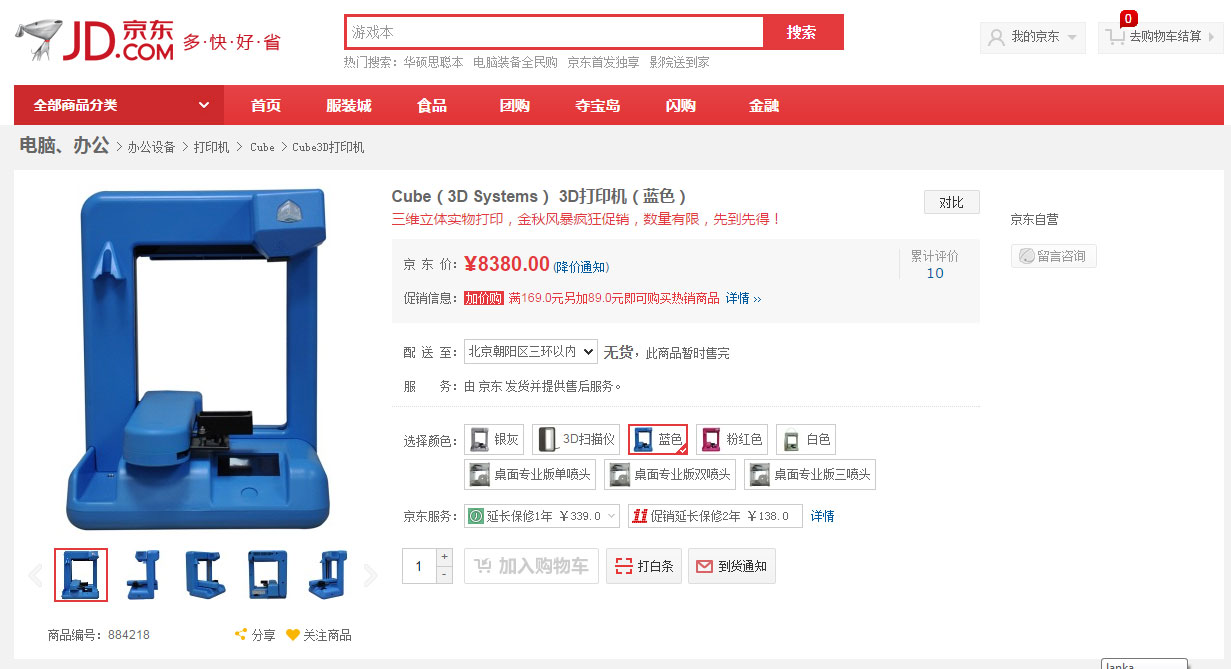5: China warming up to 3D printing
While 3D printing is not new to the Asian market, up until this year there really hadn’t been a lot of interest. But in 2014 it finally started to build up some steam. Asian governments have begun to invest real money into developing 3D printing businesses, China got MakerBot, and Asian developers have begun to develop their own 3D printing technology and not simply repurpose tech developed in the West. It took a while, but Asia is now on board and with their existing manufacturing infrastructure there is a real chance that they could end up on top.
4: Medical applications for 3D printing
Last year using 3D printing directly for medical applications was certainly being considered and explored, but actually using 3D printed technology was almost unheard of. But now it is starting to very quickly becoming an essential part of practicing medicine. From inexpensive prosthesis, 3D printed surgical guides, pre-op planning with replica organs 3D printed from MRI data and entire medical devices being 3D printed, when it comes to additive manufacturing the doctor is now in.
3: Metal 3D printing and advanced engine development
Probably more than any other sector of additive manufacturing, metal 3D printing has become an essential tool for the development of advanced engine technology. The limitations of traditional manufacturing methods have stalled engine development for decades, but with 3D printing, entirely new geometries that were never possible previously are now available to engineers and designers and a new breed of engine is being born. Aerospace, automotive and space exploration all can expect to benefit from the continued advancements of metal 3D printing.
2: Shapeways selling fan-created, fully licensed products
Artists creating 3D printable products featuring copyrighted and trademarked characters has been done since 3D printing started to become popular, but the hard work that went into these models has always gone unpaid. You can’t make money from a product owned by someone else, even if you put all the work into it. And most of the time large marketplaces like Shapeways will constantly be under pressure to remove copyrighted products from their site whether they are being sold or not. But both of those problems have been addressed in one slick move. By striking a deal with Hasbro, Shapeways has made themselves the exclusive purveyor of 3D printable goods from some of pop culture’s most recognizable brands, and artists can get paid for their work. It’s a rare win/win/win for all parties involved.
1: Autodesk’s Spark and Ember
Spark is the new 3D printing software platform that is being developed by Autodesk, and Ember is the company’s first attempt at developing hardware. Independently neither of these are the biggest stories of the year, but when combined with Autodesk SVP Jeff Kowalski’s provocative keynote address at October’s Inside 3D printing Conference Santa Clara, what it all means together, is. Developing hardware is not easy, is often monetarily risky, and tends to be something that most companies like to avoid. So why is Autodesk, a software company, getting into hardware? They aren’t doing it to suddenly start selling hardware, they’re doing it because hardware developers are holding their software business back and they want to light a fire under them. While many of the top 3D printing hardware companies are content creating, selling and marketing expensive toys to a small market of users, Autodesk thinks the industry should be thinking bigger, and they’re putting their money where their extruder is.
So as 2014 fades to black, 2015 looms large. Here are some of my thoughts on what we can expect in the coming year:
Forward momentum is difficult to alter, and the 3D printing industry is growing rather dramatically so that momentum will most likely continue. I think we’ve probably seen the last of the huge, game-changing Kickstarters for a while, too many backers have been burned by unfulfilled or underwhelming rewards. I’ve already seen products and developments that would have killed a year ago be virtually ignored and I expect that to continue until startups take their crowdfunding game up a notch. I think the time of the simple maker selling 3D printing technology from his garage has passed, people are expecting more polish and those that don’t deliver are going to be left behind. I think this will be the year that 3D printing is expected to grow up a little bit and stop treating itself like a hobby industry.







